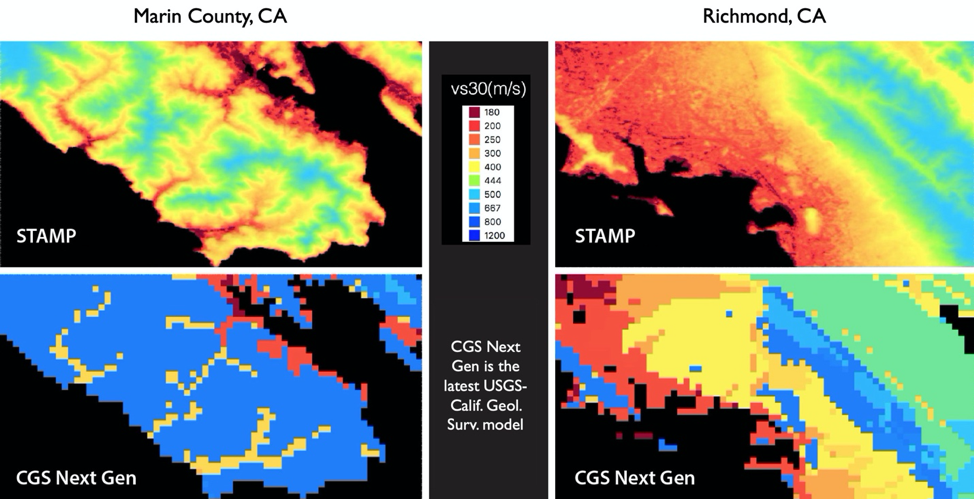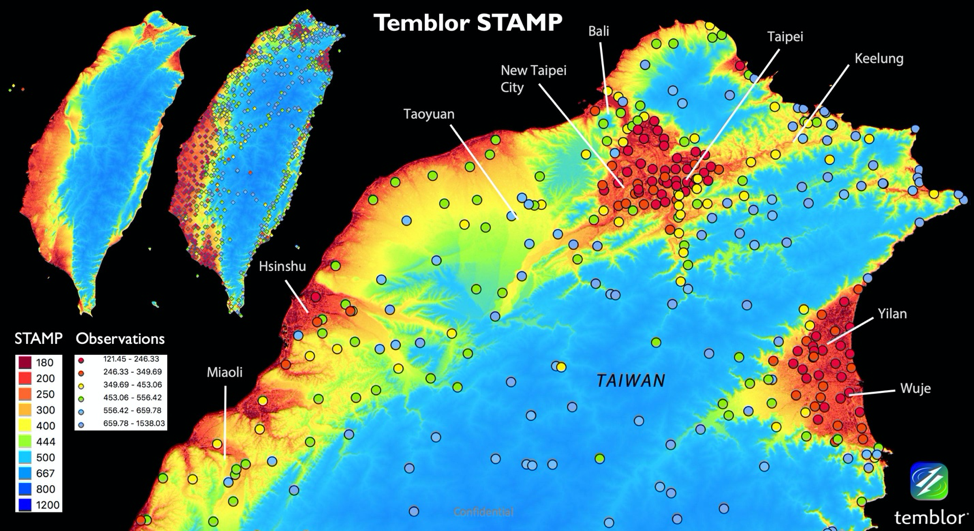Shaking intensity during an earthquake can be amplified by a factor of up to five in locations underlain by unconsolidated sediment, such as basins and estuaries, where the population and large facilities are concentrated. Site amplification models are therefore critical for estimating the potential for damage and loss. At 4-16 times higher resolution than any other model, STAMP is available at 200 m resolution worldwide. STAMP is also consistent with site amplification models that are based on geologic mapping and in situ surveys of Vs30 (shear wave velocity averaged over the upper 30 m of the crust).

In 2019, Fermat Capital Management undertook a comprehensive analysis of STAMP Japan. Fermat estimated shaking from 266 large quakes at 3,846 JMA Shindō intensity meters. Fermat adjusted their estimates of reference ground-motion for local site condition using STAMP, and also, using the standard USGS Vs30 model. Fermat then compared those two sets of estimates to the observed shaking as reported by the JMA and found that STAMP outperforms the USGS site-condition model in predicting observed ground-motion for strong shaking.

